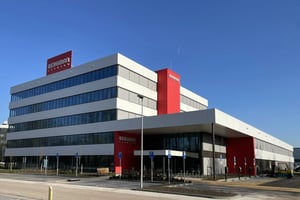3D printing has grown by leaps and bounds over the past decade. The technology enables the manufacture of objects, customised and to order, without the need to set up an entire production line. Ultimaker foresees that it will gradually revolutionise our current production and distribution processes.
“You might call it entrepreneurial confidence,” says Siert Wijnia, CTO and co-founder of Ultimaker, an NPM Capital portfolio company. “But the system of mass production in low-wage countries and global distribution is certain to change down the line. 3D printing is an absolute game changer, and we’re seeing many companies now venturing into this territory.”
Ultimaker’s 3D printers are already purchased by numerous businesses that regard 3D printing as a complementary technology that can be valuable at specific stages of the design and production process. Wijnia: “For a long time, the prevailing belief was that 3D printing would wipe out entire production processes, but it doesn’t quite work that way. If you look at a product’s lifecycle, you’ll find that 3D printing has the most added value at the early stages of the process – the visual and functional prototypes, if you will – and in the final phase, when the production stage of the product has essentially been completed but there is still a demand for spare parts. Several of our customers have begun using the technology for small quantities of functional parts. And although 3D application is still relatively rare in mass production processes, it’s really only a matter of time.”
Turnaround time: 2 days
Wijnia would appear to be right, judging by the latest trends in 3D metal printing. Companies operating in this sector, including EOS and Desktop Metal, are rapidly developing new – albeit still very expensive – 3D metal printers that operate many times faster than printers from previous generations. Industry powerhouse GE has for some time been using 3D printing technology to print complex metal engine parts for the aviation industry on a large scale, and is currently developing a printer that can also produce larger parts in mass quantities. Equally interesting: researchers at the California-based Lawrence Livermore National Laboratory announced last year that they had developed a 3D printing method for the manufacture of stainless steel parts that are twice as strong as traditionally manufactured parts.
3D printing of plastics is also edging its way into the manufacturing industry – although not in the form of products and product parts, but rather for the production of assembly tools. Wijnia: “Car manufacturer Volkswagen is using our printers, for example, to print a plastic protective cover that shields the rims of the vehicle during the process of turning the wheel screws. That’s something that used to be produced on a small scale. Turnaround time was 10 weeks, and it was expensive to boot. Now, it will set you back just a few euros in materials, and you receive your product within two days.”













